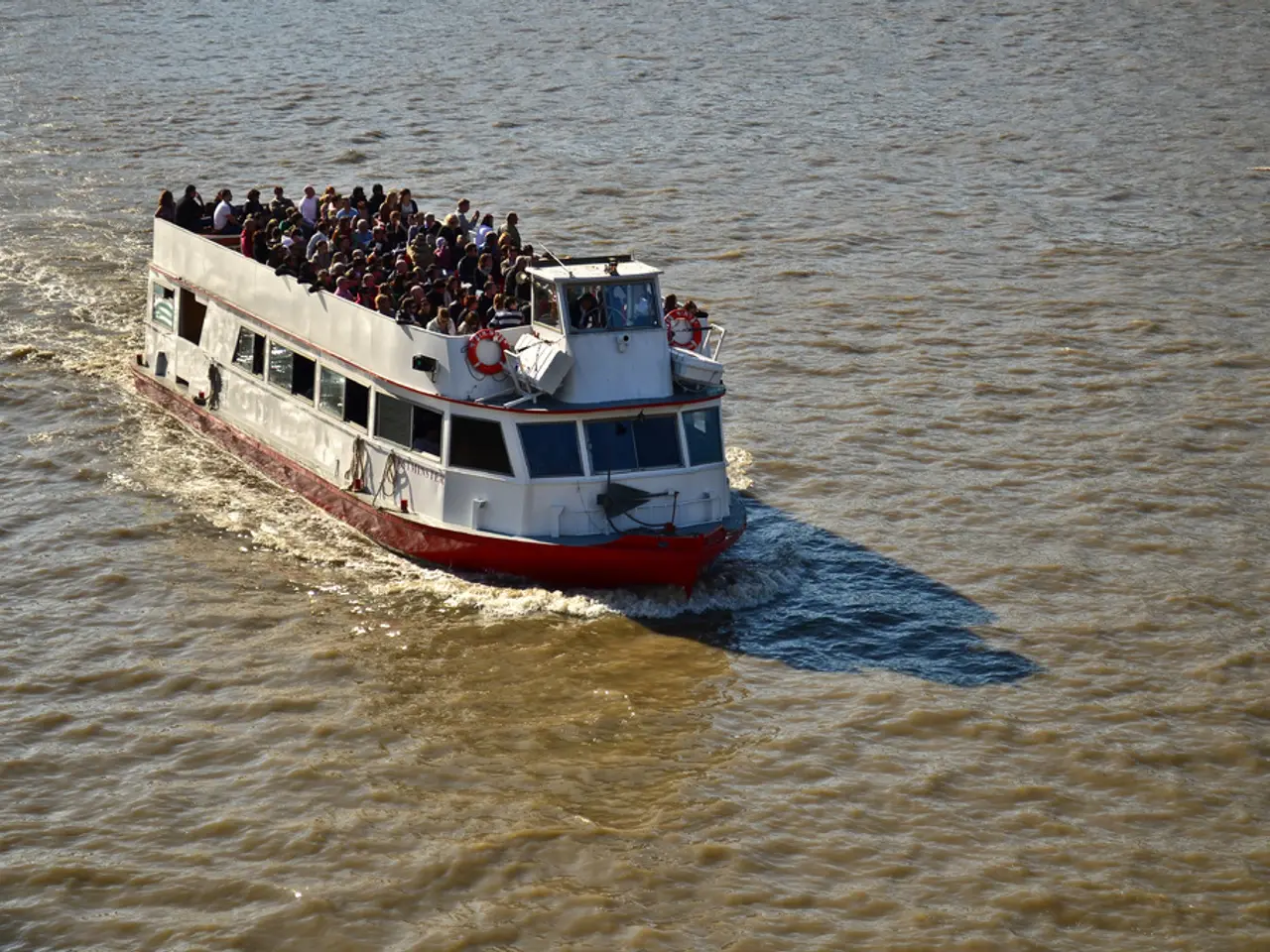Cruise ships visiting Santorini and Mykonos will now face higher taxes as a measure to combat excessive tourism.
In recent years, several European countries have taken proactive steps to manage the growing impact of cruise tourism while safeguarding local communities, cultural heritage, and the environment. This approach is particularly evident in Greece, where the cruise sector plays a significant role in the economy, contributing to approximately 25% of the country's GDP in 2024.
Greece, renowned for its stunning islands and rich history, has seen a surge in cruise tourism. In 2024, the country welcomed 7.9 million cruise passengers, a 13% increase from the previous year, with Santorini recording 1.34 million arrivals (+4%) and Mykonos 1.29 million (+8.4%). To maintain the balance between economic benefits and sustainable development, the Greek government has implemented various strategies. These include taxes on short-term rentals, climate levies, and the new cruise tax, aimed at keeping tourism sustainable while ensuring that local communities continue to benefit.
The tax on cruise passengers in Mykonos and Santorini, introduced in 2025, is aimed at supporting the infrastructure of Greece's most visited islands and ensuring that local communities benefit more directly from cruise tourism. The new fee, collected upon disembarkation, will generate revenues that will be reinvested into port upgrades, waste management, and sustainable tourism projects. Other Greek ports will also apply a cruise tax, though at lower rates.
Prime Minister Kyriakos Mitsotakis has announced additional measures to manage visitor flows, including potential caps on cruise ship arrivals and visitor quotas. Overtourism remains a localised issue in Greece, not a nationwide problem, according to the Prime Minister.
Similar measures have been implemented in other European countries to address the challenges posed by overtourism from cruise ships. In Italy, large cruise ships have been banned from entering Venice's historic centre since 2021 to prevent environmental damage and overcrowding. Regions like Trentino Alto Adige have capped overnight guests at 2019 levels and introduced pre-registration systems for popular attractions to control visitor numbers and reduce overtourism pressure.
Spain has also taken steps to manage cruise tourism. Cities such as Barcelona have cut the number of cruise ship dockings, while Ibiza limits the simultaneous docking of cruise ships to no more than two at a time. Menorca's Binibeca Vell community has restricted tourists' access to private properties during certain hours to reduce noise and disturbance to locals. Spain has also introduced strict regulations on tourist behaviour, such as banning smoking on beaches and imposing hefty fines for violations.
In France, the city of Cannes has decided to cap daily disembarkations from cruise ships at 6,000 visitors starting next year, aiming to alleviate overcrowding and environmental impact. Similar visitor caps and cruise restrictions are being introduced in other French destinations like French Polynesia.
While specific cruise-related policies are not detailed in Croatia, the country, like other Mediterranean countries, has increasingly focused on sustainable tourism strategies. Further targeted measures are likely part of national and regional tourism policies but were not explicitly detailed in the search results.
In conclusion, European countries are taking steps to balance the economic benefits of cruise tourism with the need to protect local communities, cultural heritage, and the environment. By implementing caps on visitor numbers, restricting large cruise ships, enforcing behavioural regulations, and prioritizing sustainable tourism practices, these countries are working to ensure a sustainable future for cruise tourism.
- In Greece, the surge in cruise tourism has seen the country welcome 7.9 million passengers in 2024, with Santorini and Mykonos recording significant increases.
- To maintain balance while ensuring economic benefits, Greece has introduced taxes on short-term rentals, climate levies, and a cruise tax, with the funds reinvested into infrastructure, waste management, and sustainable tourism projects.
- The Prime Minister of Greece has announced measures to manage visitor flows, including potential caps on cruise ship arrivals and visitor quotas.
- Similar measures have been implemented in Italy, Spain, and France to address overtourism from cruise ships, with restrictions on large cruise ships, caps on visitor numbers, and regulations on tourist behavior.
- Croatia, like other Mediterranean countries, has focused on sustainable tourism strategies, with targeted measures likely included in national and regional tourism policies.
- By implementing these measures, European countries are working towards a sustainable future for cruise tourism, balancing economic benefits with the need to protect local communities, cultural heritage, and the environment.




